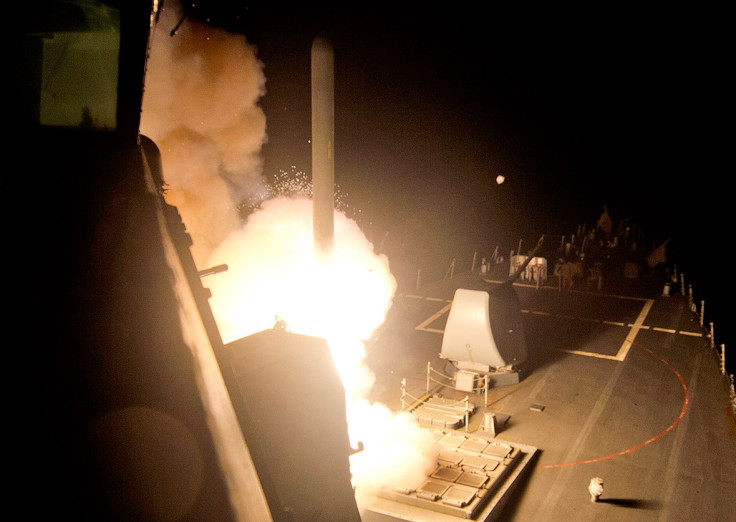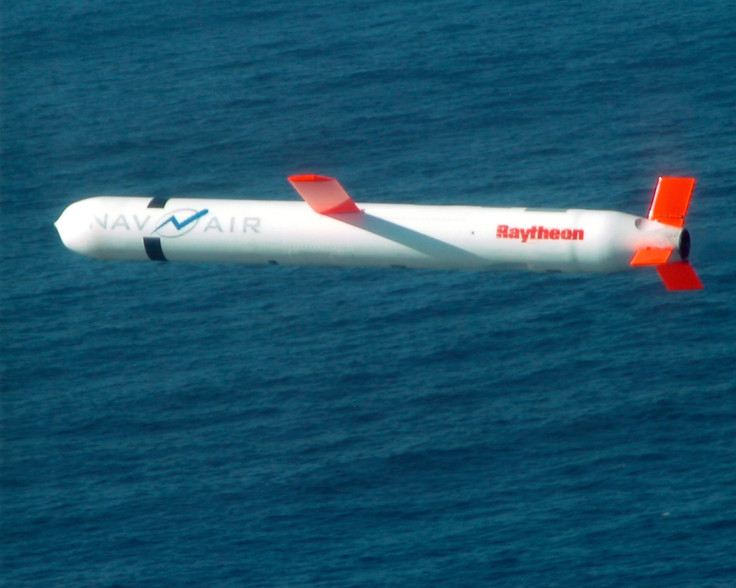All you wanted to know about the Tomahawk cruise missile
Each Tomahawk missile costs $1.5m and the US army has been using them since the Gulf War in 1991.

Donald Trump's decision to authorise an air strike in Syria could prove to be very expensive, and not only from a political standpoint.
The US launched missile strikes against the Syrian regime's Sharyat airfield on Friday morning (7 April) in response to a chemical attack in the town of Khan Sheikhoun on 5 April, in what was the first military action the US has taken against the Syrian government in the country's six-year conflict.
A number of countries including the UK, Japan and Turkey have expressed support for Trump's actions, but Russia has criticised the missile strikes, with Viktor Ozerov, head of Russia's Defense Committee in the Federation Council, claiming the strikes would "undermine the efforts in the fight against terrorism."
While the White House stopped short of launching a full scale operation, saying it targeted only airfields and stopped short of launching a concerted air campaign, the strike will come at a hefty cost for US taxpayers.
According to the US Department of Defence's annual budget, a single Tomahawk missile costs $1.59m (£1.28m). The attack on the Syrian airbase involved 59 missiles, meaning the strike had a total cost of approximately $94m (£75m, €88m).
Weighing around 1,590kg and over 6.25metres long, the Tomahawk missiles were first used by the US army during Operation Desert Storm was launched in January 1991 and have been in use ever since.

The US navy has described the weapon as "an all-weather, long range, subsonic cruise missile", which can be launched from either ships or submarines and normally carries warheads of up to 454kg.
The missiles have been used in some of the major operations conducted by the US army in the Middle East, including the Nato-led campaign in Libya in 2011, against the Libyan ruler Muammar Gaddafi.
Introduced by now defunct aerospace group McDonnell Douglas – which was taken over by Boeing in the 1970s – the missiles are now produced by Raytheon Company, one of the largest defence contractors in the US.
In December last year, the group was awarded a $304.7m contract to produce 214 Tomahawk Block IV cruise missiles, which are scheduled to be delivered next year.
Fellow aerospace and defence giant Lockheed Martin has supported all versions of the Tomahawk Weapons Control System, the missile launch system, since it was first awarded the contract in 1999.
Integrated with the ship's navigation, communication, situational awareness and launch systems, the system computes the missile's route to strike targets. The system also provides the capability to plan new missions aboard the launch platform and communicate with multiple Tomahawks to rapidly retarget and redirect the missiles in flight.
Earlier this week, the Maryland-based company secured a $38m deal to provide the joint battle management system used by the US military forces to plan and execute air operations.
The firm will provide the Theater Battle Management Core System, which coordinates almost everything flown by the military, from fighters to helicopters to cruise missiles, and is deployed in over 100 locations.
© Copyright IBTimes 2025. All rights reserved.






















